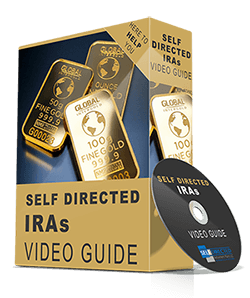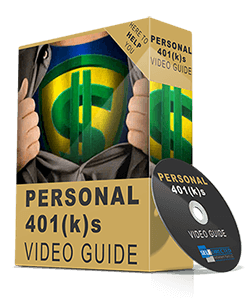When it comes to planning for your financial future, few decisions carry as much weight as how you manage your 401(k). This retirement savings plan can be a powerful tool in building a secure nest egg. Do you find the idea of maxing out 401(k) contributions intimidating?
Well, you must know that a maxed-out 401(k) might be beneficial for you, provided you execute it after examining your financial considerations. It may not necessarily be practical for everyone. Also, every year, the IRS restricts the amount you may contribute to tax-advantaged retirement plans.
So, should you consider maxing out 401(k)? How much can you max out? What are the benefits and potential drawbacks of committing such a significant portion of your income to this plan? Well, this post delves into these and more such questions. It explores all the ins and outs of maxing out your 401(k).
Let’s embark on this journey together and uncover the best strategy for getting the most out of your savings plan.
What Does It Mean to Max Out Your 401(k)?
Contributing the maximum amount to your 401(k) implies meeting the IRS’s yearly contribution limit. The cap for 2025 is $23,500. If you are over 50, you can give an additional $7,500 to catch up. Employers that match contributions have distinct restrictions for their portion of your retirement savings.
When to Max Out 401(k)?
You should consider maxing out your yearly contribution if you can afford it and if it doesn’t hamper your budget. If your annual income is $146,000 in 2025, and if your current finances are in order, you can comfortably max out your contribution of $23,500 or $31,000 (with a catch-up contribution).
Some financial experts recommend saving at least 15% of your annual income for retirement every working year throughout your career. However, this is general advice. The right amount you should be putting away for retirement depends on the following:
- When do you plan to retire?
- How much have you saved up till now?
- What might your lifestyle look like in retirement?
- How much money do you need every month to sustain that lifestyle?
Once you have made a rough estimate of your target amount, work backward to determine how much you should contribute towards your 401(k) to meet your target.
You can also contribute the minimum to get the benefit of an employer’s 401(k). That’s free money on the table! Moreover, the yearly contributions you make aren’t only helping you save for retirement; they also lower your taxable income for that year, providing immediate tax benefits.
How Do You Max Out 401(k)?
Here are some steps you can take to get the most out of your retirement savings:
1. Max Out Employer Contributions
Your company may make matching contributions to your 401(k), which is effectively free money. To maximize your benefits, you must first grasp your company’s unique restrictions. They may ask you to pay a minimum percentage of your salary, or they may match up to a particular amount.
For example, if your company matches up to 3% and you contribute 3%, you are effectively saving 6% of your salary. This doubles your savings! Employer matches vary, so check with your HR department for more information.
2. Max Out Salary-deferred Contributions
Employer matching is only the beginning. You can also consider putting up to the IRS maximum, which is $23,500 for 2025, if you can afford it.
These contributions are pre-tax, so they reduce your taxable income for the year. This is a solid tool to save more for the future.
3. Take Advantage of Catch-up Contributions
If you are over 50, you can donate an extra $7,500 every year. This can significantly increase your retirement funds.
Catch-up payments are also pre-tax, lowering your taxable income even more. This might be especially useful as you approach retirement and want to maximize your funds.
4. Reset Your Automatic 401(k) Contributions
When was the last time you evaluated your 401(k) contributions? If it’s been a while, it may be time to reconsider your contributions. With annual changes in contribution limits, reviewing your budget may help you discover more room to save.
Automatic salary contributions make saving easier since the money is deducted before you see it. If you are concerned about losing a significant portion of your take-home income, try gradually raising your contribution, such as by 1% every year.
5. Put Bonus Money Towards Retirement
Bonuses are an excellent way to enhance your 401(k). Many firms enable you to put a portion of your bonus straight into your retirement account because this money is typically unexpected.
The same goes for pay raises. When you earn an increment, consider contributing the extra money to your 401(k). This allows you to save more without feeling the financial pressure.
6. Maximize Your 401(k) Returns While Minimizing Fees
Be aware of any costs linked with your 401(k) plan. Investment and management fees might reduce your savings over time. These costs usually vary from 1% to 2%, although they can be more.
If your plan has excessive fees, speak with your HR department about more inexpensive alternatives. Index funds frequently offer lower costs and might be an affordable method to diversify your portfolio.
If you have a 401(k) from a former company, consider moving it over to a lower-cost plan. This ensures that most of your money works for you.
Benefits of Maxing Out Your 401(k)
Contributing the maximum amount to your 401(k) provides numerous critical benefits, including tax advantages, increased financial stability, and considerable investment gains.
- Tax LeveragesThe more you contribute to your 401(k), the greater your tax advantage. Reduce your taxable income now and delay taxes on investment gains.
- Financial SecurityA larger savings balance indicates better financial stability. By maxing out your 401(k) every year, you may quickly accumulate significant funds and get closer to your retirement goals.
- Compound GrowthMore significant contributions equal more incredible compound growth! To demonstrate the difference, compare the development of the maximum $23,500 contribution to half that amount ($11,750).By investing an extra over ten years, you may wind up with an enormous additional amount in your account. Imagine what that additional money may do for your future!
Looking for more 401(k) information? Click here or contact us right away so that we can provide experienced guidance and help while you plan for your retirement.
Drawbacks of Maxing Out Your 401(k)
Despite the benefits, maxing out your 401(k) contributions may not always be the best choice. Let’s explore why:
- Balancing Other GoalsRetirement is crucial, but it’s not your only financial goal. Maybe you want to save for your kids’ college, a new car, or home renovations. Putting all your money into a 401(k) might leave little room for these other priorities.
- Over-Saving for RetirementWith high annual contribution limits, you might save more than you need for a comfortable retirement. A general rule is to save around 15% of your salary. If you are already on track, it might be wiser to allocate extra funds towards other interests, like volunteering or spending quality time with family.
- Seeking Tax Efficiency401(k)s offer great tax benefits, but putting all your eggs in one basket isn’t always the best strategy. Tax diversification is as vital as investment diversification. Consider spreading your savings across IRAs and taxable brokerage accounts. This approach can help distribute your tax liability more evenly over time.
Should I Max Out My 401(k)?
It’s critical to assess your whole financial status. Retirement may appear far away, and you may have more important financial goals right now. Consider the following questions:
- Emergency Savings: Have you laid aside enough money for unforeseen expenses? Are you pleased with that amount?
- Debt: How much debt do you have? How much of your monthly pay cheque goes towards paying it off?
- Other Financial Goals: Are you saving for something else, such as a house or your child’s college fund?
- Financial Plan: Does your plan include life insurance, disability insurance, and a will or trust?
Take time to consider these factors before making a decision. Your current financial health is equally as crucial as your future retirement funds.
What Happens If You Contribute Too Much to Your 401(k)?
Once you’ve reached the maximum contribution limit, you must cease contributing to avoid paying additional taxes. Leaving the surplus in your account leads to double taxation—once when you first contribute and again when you remove. So, any overcontributions should be addressed as soon as possible.
Still, if you mistakenly over-contribute, follow these steps:
- Notify Your plan manager. Inform them about the excess.
- Withdraw the excess cash to avoid fines.
Stay informed on 401(k) limits for 2024 & 2025! Click here to read our detailed blog post and plan your retirement smartly.
Where to Invest Once You Max Out Your 401(k)?
You can augment your maxed-out retirement savings with several different investment vehicles as follows:
-
Traditional IRA Income Limits
If a retirement plan at work covers you, traditional IRA contribution deduction depends on the income slabs you belong to. For 2025, if you are a single taxpayer, the deduction phase-out begins at a Modified Adjusted Gross Income (MAGI) of $79,000 and completely goes away if your MAGI is $89,000 and above.
Suppose you are married and filing jointly, and your spouse contributing to an IRA has a workplace retirement plan. In that case, the deduction phase-out begins at $2,36,000 and completely goes away at $2,46,000.
If you don’t qualify for part or full deduction of your traditional IRA contribution, you can contribute up to the contribution limit, and your investment still grows on a tax-deferred basis.
Transform your retirement savings. Discover the benefits of a Traditional IRA today. Click here to read more!
-
Individual Retirement Accounts (IRAs)
In 2025, you can make contributions of up to $7000 to an IRA or $8,000 if you are age 50 and above. However, some IRA options may have a few income restrictions.
Discover how Individual Retirement Accounts (IRAs) can secure your future. Read more about IRAs and start planning today!
-
Roth IRA Income Limits
For 2025, if you are a single taxpayer, the income phase-out begins at a MAGI of $150,000 and goes away for income of $165,000 and above. If you are married and filing jointly, the phase-out starts at a MAGI of $236,000 and goes away at a MAGI of $246,000.
Ready to secure your future? Discover how Individual Roth IRAs can work for you. Click here to read more!
-
HSA Accounts
Health Savings Accounts (HSAs) are available to individuals with high-deductible health plans (HDHPs), irrespective of whether they got it through their employers or purchased it on their own.
For 2025, the contribution limit for an individual is $4,300, and for a family is $8,550. If you are age 55 and above, the catch-up contribution is an additional $1,000. Contributions are made on a pre-tax basis.
Transform your health savings with ease. Learn how an HSA can benefit you today. Click here to read more about HSA!
-
Variable Annuities
In variable annuities, after-tax contributions grow on a tax-deferred basis. The contract owner can decide to redeem the contract partially or fully or annuitize it. However, the gains are treated as ordinary income and hence taxed.
-
Savings for Emergencies
Having an emergency fund with at least six months of living expenses is a wise decision. If you’ve previously set this up but haven’t checked it in a while, it might be time to update. As your living expenses rise, your emergency fund should also grow. This way, you can be prepared for life’s tiny surprises.
Your emergency fund should be quickly accessible. It should be stored in liquid assets such as a savings account. Also, make sure the account is FDIC insured, which protects your money if the bank fails.
-
Educational Funds
You can also consider increasing payments to your child’s 529 college savings plan. This tax-advantaged account, offered by governments and educational institutions, is ideal for funding educational expenses.
With college fees growing year after year, assisting your child with these charges may lessen their need for student loans.
-
Taxable Investments
Unlike 401(k)s and IRAs, taxable broking accounts do not provide tax advantages. However, with good returns, they can still be a viable option.
When Should You Avoid Maxing Out Your 401(k)?
Sometimes, it may not be in your best interest to max out your 401(k). Here’s why:
-
You are in Debt
Your income is your most valuable asset for developing wealth. However, if you are saddled with credit card debt, college loans, or auto payments, your options are restricted. The most important thing to do is pay off your obligations as soon as possible!
So, for the time being, don’t bother maxing out your 401(k). Stop all investments until you are debt-free. Use the debt snowball strategy to pay off your more minor obligations first, then work your way up. This should be your primary emphasis.
-
You Don’t Have Enough Emergency Funds
Without sufficient funds, even little situations can escalate into massive catastrophes, such as unexpected obligations like medical bills or due rent payments to escape eviction. These emergencies may cause you to make hardship withdrawals from your 401(k). Such withdrawals incur taxes and penalties, as well as the loss of possible future development.
Do not put yourself in that bind! Create an emergency fund first. Accumulate 3-6 months of expenditures in a high-yield savings or money market account. This precaution guarantees that you do not have to jeopardize your future financial stability during an emergency.
-
You Have Other Financial Goals
Maxing out your 401(k) means committing the funds until retirement. Withdrawing early incurs fines and taxes. Therefore, it is not recommended. You might need to make room in your budget for other important goals, such as saving for your children’s education or paying off your mortgage early.
It would help if you considered maxing out only when other vital financial goals of your life are achieved.
To conclude, maximizing your 401(k) contributions provides significant long-term benefits, such as increased retirement savings and the advantage of compound interest. The best way to do it is to start by progressively increasing your contributions until you reach the maximum.
After you’ve maxed out your 401(k), you have the option to contribute to IRAs, HSAs, annuities, or taxable investment accounts. Your risk tolerance, investing objectives, and time horizon can determine your next move. Remember, balancing your financial priorities is critical for long-term success.
Ready to max out your 401k? Get expert advice from Self-Directed Retirement Plans LLC! Contact us today to learn more!

My goal is to assist clients/investors in their quest for financial freedom and creating generational wealth through one on one consultation and an abundance of online tools to educate. For the past 5 years I have been a private pension plan consultant with Self Directed Retirement Plans working directly with my partner Rick Pendykoski (owner) or you can .




